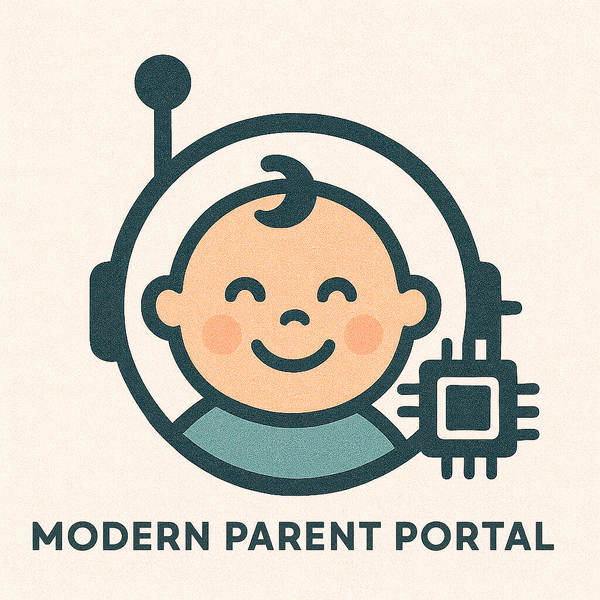What Is a Smart Nursery and How Does It Work for Baby Safety?
Introduction: Parenting in the Age of Smart Technology
Bringing a baby home comes with joy, love, and new responsibilities. Parents want to create a safe, nurturing environment while also balancing the demands of everyday life. That’s where the concept of a smart nursery comes in. But what is a smart nursery and how does it work for baby safety? Simply put, it’s the integration of connected devices, sensors, and automation tools designed to make caring for your baby easier, safer, and more reassuring.
A smart nursery isn’t about replacing parenting—it’s about giving caregivers peace of mind through real-time monitoring, automated alerts, and seamless control of the environment.
What Is a Smart Nursery?
Defining the Smart Nursery Concept
A smart nursery is a baby’s room enhanced with connected devices and intelligent systems that use WiFi, Bluetooth, and AI to help parents monitor, protect, and comfort their child. Instead of standalone products, the nursery becomes an ecosystem of devices working together.
Core Goals of a Smart Nursery
- Safety – Protecting the baby from hazards like overheating, poor air quality, or unsafe sleep conditions.
- Convenience – Automating routine tasks like lighting, feeding reminders, or white noise.
- Peace of Mind – Allowing parents to check in anytime, from anywhere, through smartphone apps.
How Does a Smart Nursery Work for Baby Safety?
The Role of Connected Devices
Each device in a smart nursery has a specific function, but together they create a safety net. Sensors track changes, cameras provide live views, and apps send alerts instantly.
Examples of Baby Safety Functions
- Temperature Monitoring – Prevents overheating or chilling.
- Breathing & Movement Tracking – Alerts caregivers if irregularities are detected.
- Smart Alerts – Sends notifications if the baby rolls over or leaves the crib.
- Environment Control – Adjusts lighting or sound for better sleep and comfort.
Essential Components of a Smart Nursery
1. Smart Baby Monitors
Smart baby monitors are the heart of most smart nurseries. These devices provide live video, two-way audio, sleep tracking, and motion detection. Some advanced models even analyze breathing patterns without physical contact.
2. Smart Cribs and Sleep Tech
Smart cribs often include rocking functions, built-in white noise, and safety alerts. They can automatically respond to crying by gently soothing the baby back to sleep, reducing the risks associated with overtired parents missing cues.
3. Smart Sensors for the Environment
Environmental sensors can track room temperature, humidity, and air quality. This helps prevent risks like overheating or poor air circulation, both of which can affect infant safety.
4. Smart Cameras and Wearables
Nursery cameras provide encrypted video feeds, night vision, and motion alerts. Wearables such as smart socks or bands track vital signs like oxygen levels and heart rate.
5. Smart Lighting and Sound
Dimmable lights, sunrise alarms, and voice-controlled lamps reduce disruptions during late-night feedings. White noise machines can be synced with sleep patterns, promoting longer and safer rest.
Benefits of a Smart Nursery for Parents
Enhanced Safety Through Monitoring
With real-time updates and AI-driven alerts, parents no longer have to rely solely on intuition. The devices act as an extra set of eyes and ears.
Reduced Stress and Anxiety
Knowing you can monitor your baby from anywhere allows parents to rest more easily and focus on self-care.
Smarter Routines
Automation reduces the mental load by scheduling feedings, adjusting lights, or providing reminders.
Remote Access and Control
Parents can monitor from work, while traveling, or even just from another room.
How the Technology Behind Smart Nurseries Works
Internet of Things (IoT) Integration
Devices connect through WiFi or Bluetooth, sending data to apps. Parents receive notifications instantly, whether it’s a temperature alert or motion detection.
Artificial Intelligence and Machine Learning
AI analyzes sleep patterns, movement, and sound data to identify trends. Some devices learn routines and adjust settings automatically.
Data Security and Privacy
With connected technology, data security is critical. Most reputable devices use encryption and secure apps to protect sensitive information. Parents should always review privacy settings carefully.
Are Smart Nurseries Safe?
Safety Considerations
While designed for safety, no device replaces attentive caregiving. Parents should use smart devices as supplements, not substitutes.
Common Concerns
- Electromagnetic exposure – Most devices emit minimal radiation, far below harmful levels.
- Hacking risks – Using strong passwords and secure networks reduces this risk.
- Over-reliance – Technology should enhance parental care, not replace it.
Practical Steps to Create a Smart Nursery
Step 1: Define Your Needs
Decide what’s most important—monitoring, sleep support, or environmental safety.
Step 2: Choose a Central Hub or App
A single app controlling multiple devices prevents tech overload.
Step 3: Prioritize Security
Select devices with encrypted feeds and updated software.
Step 4: Start Small and Scale
Begin with one or two devices (such as a monitor and sensor) before building out the ecosystem.
The Future of Smart Nurseries
As AI advances, smart nurseries will become even more predictive. Imagine a system that not only tracks your baby’s sleep but also predicts when they’ll wake up or alerts you to early signs of illness.
Future innovations may include:
- AI-driven predictive safety alerts
- Seamless integration with health records
- Voice-guided parental assistance
- Eco-friendly, energy-smart nursery systems
Conclusion: Balancing Tech with Care
So, what is a smart nursery and how does it work for baby safety? It’s a carefully designed environment that uses connected devices to enhance safety, comfort, and peace of mind for both babies and parents. While no technology can replace love and attention, a smart nursery can help parents feel more confident and supported as they navigate the early stages of parenthood.
